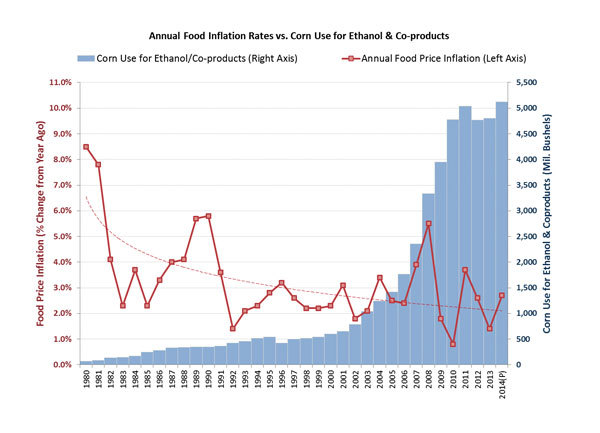Food vs Fuel: Enough To Make You Scream



October 21, 2014
BY Bob Dinneen
Advertisement
Advertisement
Related Stories
The USDA currently predicts corn use in ethanol for the 2025-’26 marketing year to be unchanged when compared to the 2024-’25 marketing year, according to forecasts included in the agency’s latest WASDE report, released May 12.
On May 6, the Nebraska Ethanol Board joined Nebraska Gov. Jim Pillen in proclaiming May as Renewable Fuels Month. Nebraska is the country’s second largest ethanol producer, with more than 2 billion gallons of production capacity.
Scientists at Washington State University have found a new way to produce sugar from corn stalks and other crop waste, potentially opening a new pathway to sustainable biofuels. The experimental process used ammonium sulfite-based alkali salts.
The Trump administration on May 8 announced a new trade deal with the U.K. that the White House said will create a $5 billion export opportunity for U.S. farmers, ranchers and producers, including more than $700 million in ethanol exports.
Reps. Zach Nunn, R-Iowa, and Nikki Budzinski, D-Ill., on May 7 introduced a bill that aims to update USDA’s Section 9003 program to expand access to grants, streamline loan guarantees and provide $100 million in mandatory funding over five years.





